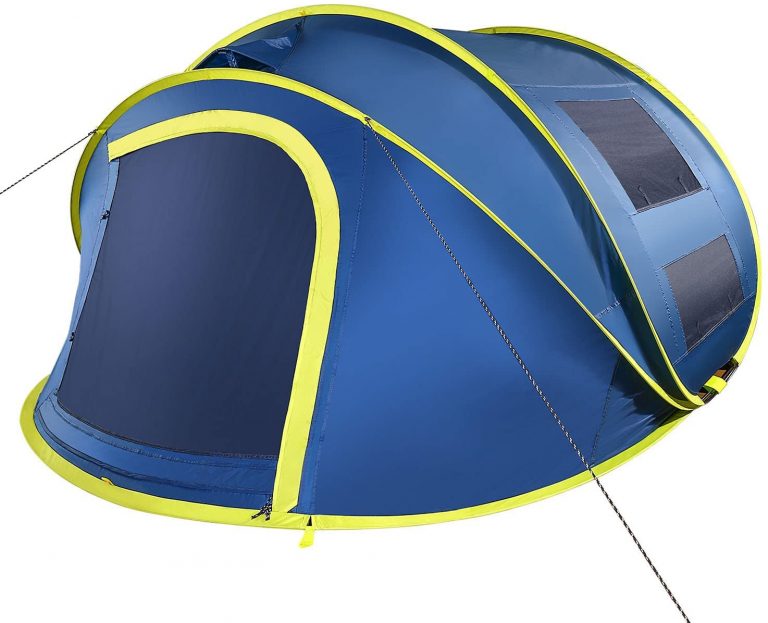Did you know that 40 million Americans go camping each year? If you're one of them, then understanding the ins and outs of a successful camping trip is essential.
One key element many overlook is the tent footprint. You might be wondering, what exactly is a tent footprint? Well, it's not as complicated as it sounds!
A tent footprint acts as a protective barrier between your tent and the ground beneath it. It's vital for preventing annoying tears in your tent caused by sharp rocks or sticks.
In this article, we'll delve into why using a tent footprint is important, explore the different types available, guide you on how to choose and use one correctly, provide tips for maintaining it properly and even suggest some alternatives.
So whether you're an experienced camper or just starting out, learning about tent footprints will give you that extra edge for your next wilderness adventure.
Key Takeaways
- Tent footprints act as a protective barrier between the tent and the ground, preventing tears and increasing longevity.
- Choosing the right tent footprint is important for durability and comfort, and custom-sized options are available for a perfect fit.
- Tent footprints can provide insulation against cold ground temperatures and protect against sharp stones on rocky terrains.
- Alternative options for tent protection, such as tarps, Tyvek, polycryo ground cloth, or DIY footprints, offer versatility and custom solutions for different camping styles and budgets.
Definition of a Tent Footprint
Ever wondered what a tent footprint is? Well, it's essentially a protective layer that's placed between the bottom of your tent and the rough ground. Think of it as an extra shield for your sanctuary in the wild, enhancing your freedom to set camp anywhere without worrying about punctures or abrasion damage to your precious shelter.
Footprint Materials play a vital role in its effectiveness. Typically made from durable fabrics like polyester or nylon, footprints are designed to resist tearing and withstand rugged terrains. You'll find them in varying thicknesses – thicker ones offering more durability but being heavier to carry around.
Tent Compatibility isn't something you should overlook when choosing a footprint either. They come in different sizes and shapes to match various tent models, so make sure you get one that fits perfectly with yours. A well-matched footprint not only protects but also helps keep your tent clean and dry by preventing groundwater seepage.
So remember folks, extend the life of your tent by using a footprint – it's like an insurance policy for your portable home away from home while on those adventurous exploits out there. It's all about enjoying freedom without worry!
Importance of Using a Tent Footprint
Imagine setting up camp on a rough, rugged terrain – without the right protection, your shelter could easily succumb to damage. That's where the importance of this protective layer comes into play.
A tent footprint is more than just an additional camping gear; it's a crucial element that offers a plethora of benefits.
Firstly, using a tent footprint helps enhance your tent's longevity. It acts as a barrier between the ground and your tent floor, protecting it from abrasions and punctures caused by sharp rocks or twigs. This way, you're not only safeguarding your investment but also ensuring you've got reliable shelter for many adventures to come.
Secondly, a footprint provides some much-needed insulation against cold ground temperatures. It keeps the chill out and traps warmth inside, making for an overall more comfortable camping experience when you're braving those cool nights outdoors.
By now you might be seeing why taking along this humble piece of fabric can make such a difference. Using a tent footprint isn't just about durability or comfort – it's about freedom too. It frees you to explore wilder terrains with confidence knowing that your shelter is well-protected and cozy, wherever you pitch it!
Different Types of Tent Footprints
There's no denying it – not all camping gear is created equal, much like how every cloud has a silver lining. This holds true when selecting tent footprints as well.
The variety in footprint materials and the option for customizing footprints can make your camping experience smoother and more enjoyable.
Primarily, there are two types of footprint materials to choose from: polyester and polyethylene. Polyester footprints are lightweight, making them ideal for backpacking trips where you need to conserve space and weight. They're durable too, resisting wear-and-tear even on rocky terrains.
Polyethylene footprints, on the other hand, are thicker and offer superior protection against sharp objects and rough surfaces.
Now let's talk about customization. Some manufacturers offer custom-sized footprints that perfectly match the dimensions of their tents. These customized pieces provide an exact fit which ensures maximum protection without any unnecessary overhang that could collect rainwater or debris.
So, whether you're hitting the trail for a weekend getaway or setting up a base camp for an extended expedition, always remember – choosing the right type of tent footprint isn't just about durability or weight; it's also about finding what best suits your unique style of adventure.
How to Choose the Right Tent Footprint
Picking the perfect groundsheet for your outdoor escapade isn't rocket science, but it does require a bit of thought and careful consideration. To start, footprint sizing errors are common mistakes to avoid. Your tent footprint should match the shape of your tent and be slightly smaller so rainwater doesn't pool under your tent.
When you're shopping around, keep an eye out for eco-friendly options. These footprints can provide the same protection from sharp rocks and damp ground as traditional options while also reducing your environmental impact. Look for products made from sustainable or recycled materials to further boost your green credentials.
Consider durability too. A good-quality tent footprint will last you many camping trips, so don't skimp on this essential piece of gear. It's worth investing a little more upfront to save money in the long run.
Remember that not every camping trip is the same; what works well in one scenario might not in another. Therefore, having different footprints for different seasons or terrains can make a world of difference.
So take these factors into account when choosing your next tent footprint and enjoy worry-free nights under the stars!
How to Use a Tent Footprint
Believe it or not, using a groundsheet could be the difference between waking up refreshed in your cozy outdoor haven and finding yourself floating on a mini lake at dawn. A tent footprint is an essential piece of equipment for any camper who wants to stay dry and comfortable. But how do you use it?
Footprint Installation is quite straightforward:
- First, lay down the footprint where you're going to pitch your tent.
- Next, make sure that the printed side of the footprint faces down.
- Then, align your tent over this base layer and peg both layers together.
When setting up in various weather conditions, keep these points in mind:
- In wet conditions, ensure all edges are under the tent so water doesn't pool on top.
- If dealing with wind, secure your footprint with heavy objects or additional pegs to prevent it from blowing away.
- When camping on rocky terrains, a robust footprint can protect against sharp stones piercing your tent's bottom.
Always remember: Weather Effects can drastically impact your camping experience. So take time to perfect your setup process before heading out into the wild. By doing so, you'll guarantee yourself a more enjoyable outdoor adventure.
Tips for Maintaining Your Tent Footprint
After mastering the usage of your tent footprint, it's essential to switch gears and focus on maintaining it effectively. As with any camping equipment, proper care can significantly increase its lifespan and performance.
Firstly, let's discuss some Footprint Cleaning Methods. You've probably noticed how your footprint gets dirty after a few uses – that's normal! But don't just pack it away; clean it first. A simple rinse with warm water should do for most dirt or sand. For tougher stains, use a mild soap but avoid harsh detergents as they could damage the material. Always make sure to air dry your footprint completely before storing to prevent mold growth.
Speaking of storage, there are specific Footprint Storage Solutions you should adopt for optimal longevity. Store your footprint in a cool, dry place away from direct sunlight which can cause fading and degradation over time. Also, rather than folding it up the same way each time – which can weaken certain areas due to constant creasing – try loosely rolling or stuffing it into its storage bag.
So remember folks: take care of your gear and it'll take care of you, providing many seasons of outdoor freedom and adventure under the stars!
Alternatives to Tent Footprints
While it's true that your camping adventures wouldn't be quite the same without that trusty ground cover, there are indeed other options out there for you to explore. Sure, a tent footprint is great, but have you ever thought about what else could serve the same purpose?
Here are some alternatives worth considering:
- Tarp: This versatile material can effectively protect your tent from damp ground and sharp rocks. It's easy to use – just cut it down to match the size of your tent.
- Tyvek: Known for its durability and water resistance, Tyvek is another excellent choice. Plus, it's lightweight and packs up small.
- Polycryo Ground Cloth: This ultra-lightweight material offers good protection against moisture without adding much weight to your pack.
- DIY Footprints: Why not make your own footprint using materials like painter's tarp or heavy-duty plastic sheets? You can tailor them exactly to your needs.
Footprint Material Choices aren't limited to store-bought options. With DIY Footprints, freedom rings as you create a custom solution that fits both your camping style and budget perfectly. So next time before reaching for that standard footprint, remember these alternatives. They may end up becoming new favorites on future camping escapades!
Frequently Asked Questions
Can I use a tent footprint for other camping purposes?
Like a Swiss army knife, your tent footprint can be versatile. Footprint alternatives offer multipurpose usage for other camping needs. You're free to use it as a picnic blanket or even an emergency rain cover!
How often should I replace my tent footprint?
Footprint longevity depends on usage and maintenance. If you're frequently camping, inspect it regularly for wear. With proper care, it can last several seasons. Replace your tent footprint when signs of extensive damage appear.
Can I make a DIY tent footprint, and if so, how?
Yes, you can create a DIY tent footprint. Start by choosing durable, water-resistant materials like tarp or Tyvek. Weigh the cost effectiveness based on your camping frequency and conditions. Freedom in self-reliance awaits!
Are there specific brands of tent footprints that are recommended by experts?
As the saying goes, “You get what you pay for.” Experts often recommend durable brands like MSR and Big Agnes. Their footprints offer quality material choices and minimal environmental impact, giving you freedom to explore worry-free.
What should I do if my tent footprint gets damaged while camping?
If your tent footprint gets damaged, don't panic. Utilize footprint repair techniques such as duct tape for temporary fixes. Always carry a repair kit while camping to swiftly tackle any damage that may occur.
Conclusion
So, now you've learned the ropes about tent footprints. They're not just a piece of fabric but your tent's best friend, protecting it from wear and tear.
Remember to pick the right one and use it properly for a cozy camping experience. And don't forget, even though alternatives exist, they can't quite match up to the real deal.
Happy camping!







